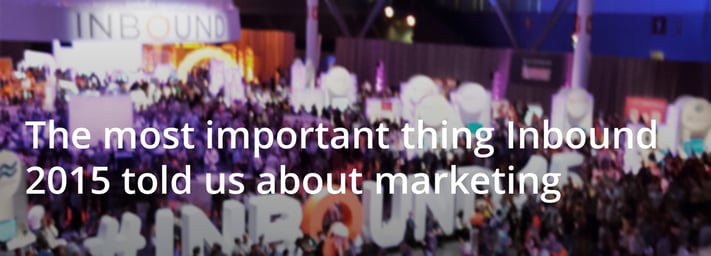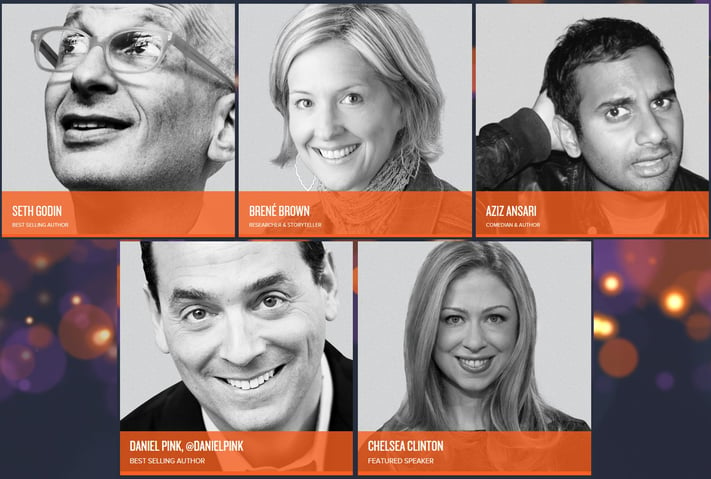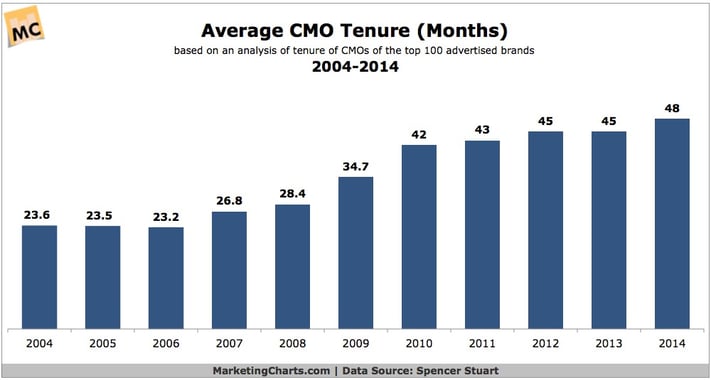
Whatever you call it – permission marketing, content marketing, inbound marketing – the takeaway from the HubSpot Inbound 2015 conference is this: the sales and marketing climate is changing, and marketers must get all areas of the business to buy into this brave new world.
Over 14,000 attendees were in Boston for the four-day conference, which attracted potential and current HubSpot customers, thought leaders, executives, and salespeople alike. From my in-person chats at the conference, I know more than a few current HubSpot users were hoping for solid takeaways to improve their business. Unfortunately, many were disappointed by how introductory-level many of the education sessions were.
So did HubSpot cast the net too wide?
The company has cultivated a highly devoted following of inbound professionals, but this conference makes it clear their attempts to appeal to a broader demographic.
For example, here’s a breakdown of topics from the Inbound 2015 keynote speakers lineup:
- Aziz Ansari: Online dating
- Brené Brown: How to live a brave life
- Chelsea Clinton: Social change and women’s rights
- Daniel Pink: The death of old style selling with the rise of consumer empowerment
- Seth Godin: Stop seeking approval and start taking responsibility

What do they have in common? They advocate brave new ideas aimed at a broad audience – just not necessarily marketing ideas. You have to question this lineup for a marketing conference, branded as #INBOUND15, geared to attract inbound advocates.
The Inbound Movement
Inbound marketing, coined by HubSpot, is all about using a limited marketing budget to attract the customer using content marketing.
Inbound marketing activities (blogs, downloadables, SEO, social media marketing) attempts to give customers the resources to solve their informational needs and move themselves down the purchase funnel. It’s often contrasted against outbound marketing (purchasing lists, cold-calling, TV spots), which involve more interruptive activities to capture a prospect’s attention.
For marketers who buy into inbound ideology, it all makes sense. But those who practice inbound marketing in any organization that isn’t blessed by a leadership at the forefront of adapting to new trends, quickly realize this doesn’t work out of there is no buy-in from other departments in the organization. After all, if your sales team must devote all their resources to meet an n number of cold calls a day quota, no one has time for your nurtured leads.
Organizational buy-in for inbound marketing
This was a concern I heard echoed by many marketers at the conference. Buy-in is also a concern with many of our ENGINEERING.com clients – in fact, we even devoted a webinar on how to road map the digital marketing journey in manageable steps.
A statistic from the conference that really drives home this point: the average CMO tenure from the 2000’s hovered just around 2 years. What this meant is a marketing department highly motivated for immediate results, using tactics such as trade shows, contests, and the like. And it meant installing a content marketing strategy – key to inbound marketing, but known to be a long wait before the payout – was extremely hard.

Perhaps a response to the general industry shift toward permission selling, or a catalyst driving it, CMO tenures have been sharply climbing since: it’s reached 48 months in 2014.
This trend paves the way for marketing to evolve as an industry. Longer tenures means more time for marketeering departments to prove the value of content marketing, and try out more long-term strategies that may result in higher ROMI.
A brave new world
My take is that Inbound 2015 aimed to broaden the demographic of attendees, perhaps wisely.
For sales and other departments to become more integrated and part of marketing, the entire organization must buy-in. And that’s why marketing professionals cannot be the only champion of the inbound movement. This transformation must begin with conferences like Inbound, and be nurtured with a continual stream of thought leadership afterward.
Thanks for reading,
Cecelia





